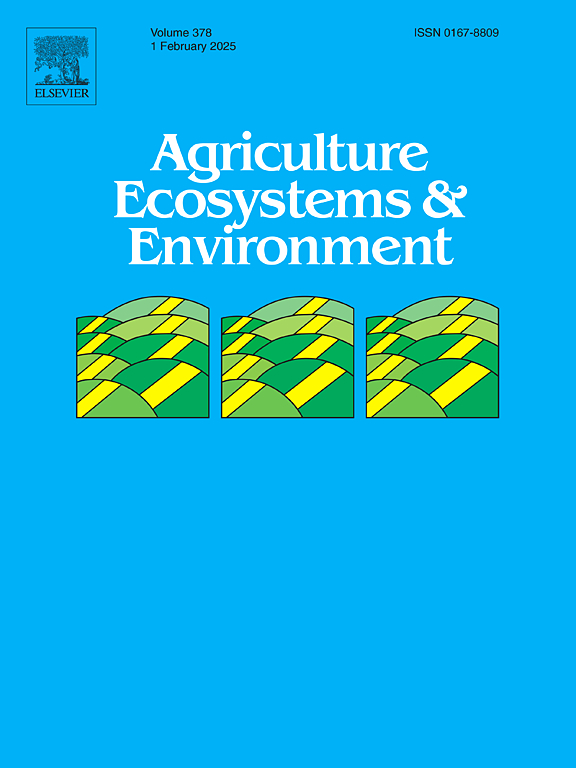Effects of nitrogen deposition on temporal stability and resistance of the alpine steppe plant communities on the Qinghai-Tibetan Plateau
IF 6
1区 农林科学
Q1 AGRICULTURE, MULTIDISCIPLINARY
引用次数: 0
Abstract
Multidimensional stability is crucial for capturing ecosystem dynamics and maintaining Earth's ecosystem services in response to environmental changes. Recently, nitrogen (N) deposition has increased significantly, particularly in the Qinghai-Tibetan Plateau. However, the impact of N deposition on multidimensional plant community stability remains poorly understood. To address this knowledge gap, this study conducted a 5-year N addition experiment in the alpine steppe of the Qinghai-Tibetan Plateau. The results revealed that N addition decreased the temporal stability of plant communities and rare species, while simultaneously enhancing the resistance of plant communities, dominant and common species. Noteworthy findings were that temporal stability of rare species and species asynchrony were main predictors for the temporal stability of plant community, while resistance of dominant, common and rare species was an important predictor of plant community resistance. The results suggested that species composition and species asynchrony regulated the stability of alpine steppe plant community under N addition. In light of increasing N deposition in the alpine regions, these findings offer a scientific foundation for conservation management of the alpine steppe ecosystem in the future.
氮沉降对青藏高原高寒草原植物群落时间稳定性和抗逆性的影响
多维稳定性对于捕捉生态系统动态和维持地球生态系统服务以应对环境变化至关重要。近年来,氮沉降明显增加,特别是在青藏高原。然而,氮沉降对植物群落多维稳定性的影响尚不清楚。为了解决这一问题,本研究在青藏高原高寒草原进行了为期5年的氮添加试验。结果表明,氮的添加降低了植物群落和稀有物种的时间稳定性,同时增强了植物群落、优势种和常见种的抗性。值得注意的是,稀有物种的时间稳定性和物种的非同时性是植物群落时间稳定性的主要预测因子,而优势种、常见种和稀有种的抗性是植物群落抗性的重要预测因子。结果表明,氮添加对高寒草原植物群落的稳定性起着物种组成和物种不同步的调节作用。鉴于高寒地区氮沉降的增加,这些研究结果为今后高寒草原生态系统的保护管理提供了科学依据。
本文章由计算机程序翻译,如有差异,请以英文原文为准。
求助全文
约1分钟内获得全文
求助全文
来源期刊

Agriculture, Ecosystems & Environment
环境科学-环境科学
CiteScore
11.70
自引率
9.10%
发文量
392
审稿时长
26 days
期刊介绍:
Agriculture, Ecosystems and Environment publishes scientific articles dealing with the interface between agroecosystems and the natural environment, specifically how agriculture influences the environment and how changes in that environment impact agroecosystems. Preference is given to papers from experimental and observational research at the field, system or landscape level, from studies that enhance our understanding of processes using data-based biophysical modelling, and papers that bridge scientific disciplines and integrate knowledge. All papers should be placed in an international or wide comparative context.
 求助内容:
求助内容: 应助结果提醒方式:
应助结果提醒方式:


